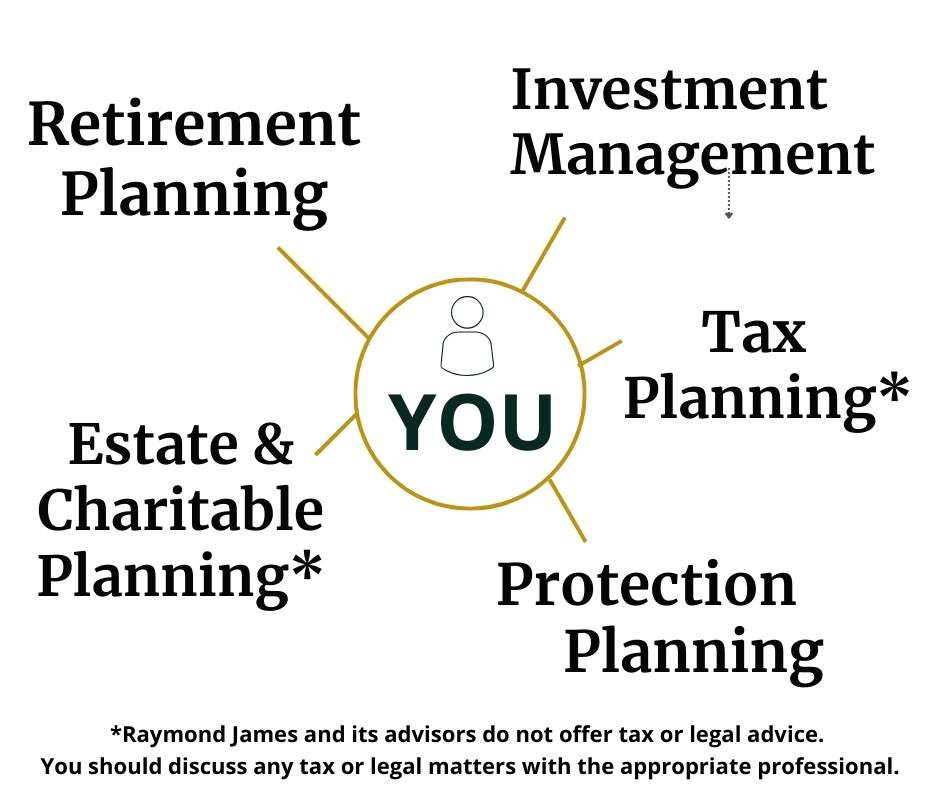How OBBBA Can Impact Retirement Account Planning
Cornerstone is proud to bring you insights like this article from Ed Slott and Company, LLC.
As a member of Ed Slott’s Elite IRA Advisor Group™, Gordon keeps our team ahead of tax law changes and retirement planning strategies. Exclusive training like this helps us guide clients through the complex rules to avoid unnecessary taxes and fees—so you can make the most of your retirement!
Commentary from Ed Slott, CPA Editor-in-Chief, Ed Slott’s IRA Advisor
With hundreds of provisions, the recently enacted One Big Beautiful Bill Act (OBBBA) is certainly big. That being said, OBBBA is not SECURE 3.0; unlike the original SECURE Act and SECURE 2.0, OBBBA does not contain any direct changes to traditional IRAs, traditional 401k (s), or other retirement accounts. Nevertheless, OBBBA does include many features that can indirectly affect retirement savings decisions. In particular, IRA owners may face challenges about executing partial Roth IRA conversions and the amount involved.
Stopping the Sunset
For retirement planning, a key part of OBBBA is the permanent extension of the reduced federal income tax rates enacted in the Tax Cuts and Jobs Act (TCJA) of 2017. Originally, the TCJA rates were scheduled to expire at the beginning of 2026, going from today’s 10%, 12%, 22%, 24%, 32%, 35%, and 37% back to the higher tax rates prevailing in 2017: 10%, 15%, 25%, 28%, 33%, 35%, and 39.6%. OBBBA permanently retains the lower tax rates of 2025.
Of course, “permanence” in tax law lasts only until a future Congress changes the rules. Given today’s political situation, though, it’s likely that the current relatively low tax rates will be in effect for at least 2026 and some succeeding years.
What does this have to do with retirement planning? Many observers expect tax rates to rise sharply in the future, perhaps mainly impacting the high-income taxpayers most likely to use financial and tax advisors, due to the current level of federal debt and the need to support Social Security, as well as Medicare. People who hold pre-tax retirement accounts face required minimum distributions (RMDs) every year once they reach their 70s (exact start date depends on year of birth), so hefty withdrawals then may be taxed at steep rates.
If current owners do not deplete their tax-deferred accounts, the RMDs will pass to beneficiaries, who could owe the resulting tax in addition to their own obligations. Moreover, the accelerated RMDs passed down to beneficiaries by the SECURE Act could be an unwelcome bequest.
Roths to the Rescue
Roth IRA conversions are an appealing way to trim the deferred taxes. Prudent conversions could keep the tax bill in the 24% or even the 22% tax bracket, as long as OBBBA is in effect. This year, a married couple could have up to $394,600 in taxable income (after deductions) and owe no more than 24 cents on each taxable dollar. After Roth conversions, qualified distributions (including any post conversion gains) are tax-free for account owners and their subsequent beneficiaries; owners never face RMDs, at any age.
Therefore, a plan that calls for cautious annual Roth conversions, within moderate tax brackets, eventually could reduce or even eliminate RMDs. The trap, though, is that a current Roth conversion must occur during the taxable year (say, by 12/31/25). However, the exact numbers on taxable income for that year won’t be known until months in the future (say, 4/15/26) when the relevant tax return is filed. Keeping reported income within a desirable bracket can involve some guessing along with known numbers.
Creating Complexity
Therefore, owners of tax-deferred accounts face challenges in determining how much to move to increase taxable income by shifting dollars to the Roth side. In addition, many other OBBBA provisions include tax benefits, which can have a flow-down impact on the taxation of Roth conversions.
One of the most notable OBBBA changes is the increase in the state and local tax (SALT) deduction. Since the TCJA took effect, people who itemize deductions conversions will be the same as it was from 2018 through 2024. on Schedule A of IRS Form 1040 have been limited to a $10,000 deduction for all taxes (income, property, etc.) imposed by states and localities. Consequently, many taxpayers have shifted from itemizing to taking the standard deduction.
OBBBA bolsters the case for itemizing. For tax years 2025 through 2029, the SALT deduction rises to $40,000. Both the old and new limits apply to single taxpayers as well as to married couples filing jointly. For many taxpayers, a more sizable SALT deduction will mean lower reported taxable income and a lower income tax obligation. The impact may be widespread, rather than confined to states known for high taxes, such as California and New York. Anywhere in the U.S., a reduction in the anticipated tax due for this year might generate an increase in the amount converted to a Roth account by year’s end.
Tax cuts, more Roth conversions. Sounds like a potent one-two punch. However, there is a catch leading to a need for more sophisticated planning. For single and joint returns, the higher SALT limit phases out, 30 cents on the dollar, from modified adjusted gross income (MAGI) of $500,000 to $600,000. Generally, MAGI here is the same as regular AGI. Thus, with MAGI of $600,000 or more in 2025, the SALT cap reverts back to $10,000.
Consequently, tax planning for this interaction is tripled tiered. With AGI at $500,000 or below, a Roth conversion is a safe play as long as the $500,000 MAGI total is not breached. If MAGI over $600,000 is locked in, so is the $10,000 SALT cap and planning for Roth If MAGI could fall in the phaseout range, though, Roth conversions might create the same sort of “tax torpedo” that increasing IRA withdrawals along with the addition of Social Security benefits can produce. Higher marginal tax rates occur.
A Welcome Workaround
Silence can be golden, as owners of pass-through businesses (partnerships, S corporations, some LLCs) learned from the recent passage of OBBBA. The final version of this law specifically excluded a provision in the original House version that would have disallowed the Pass-Through Entity Tax (PTET) tactic. With the PTET strategy, the business owner’s state income taxes are paid by the business and deducted in full on the business tax return, and that income flows through to the owner’s personal tax return.
Using a PTET in this manner lowers pass-through business taxable income, which in turn lowers the self-employment tax and any additional Medicare (0.9%) taxes on that business income. For the business owner, the result can be lower AGI, as well as improved results from various tax obligations tied to AGI, a drop in the 3.8% tax on net investment income and possibly escape from costly Medicare IRMAA surcharges. The SALT taxes are deducted in full on the business tax return and credited on the owner’s personal tax return, regardless of AGI.
Unfortunately, sole proprietorships generally do not qualify for the PTET break. The same is true for single member LLCs, but single member LLCs that elect to be taxed as an S corporation usually do qualify. PTET acceptance varies by state.
Tackling the Tradeoffs
Beyond the SALT changes, other OBBBA provisions may have to be considered when making Roth conversion decisions. One example is the 20% Qualified Business Income (QBI) deduction, which also has been made “permanent,” for now. For the self-employed individuals and small business owners who qualify for the deduction, income limits have been expanded.
In 2025, the 20% QBI deduction applies for people with taxable income up to $197,300 (single filers) or $394,600 (joint filers). For the next $50,000 (single) or $100,000 (joint), the deduction shrinks until it disappears at $247,300 or $494,600. With higher taxable income, there is no QBI deduction for certain personal service businesses, (known as Specified Service Trade or Businesses [SSTBs]). Other non-SSTBs could still qualify, subject to wage and property limits. Under OBBBA, in 2026 the ranges for reducing the QBI deduction will increase from $50,000 to $75,000 (single) and from $100,000 to $150,000 (joint) while the taxable income thresholds will be adjusted for inflation.
A 20% tax deduction can be appealing but its availability makes Roth conversion decisions difficult. Such conversions will increase taxable income…and also increase the QBI deduction! However, if the Roth conversion puts taxable income over the upper number, the QBI deduction might be lost altogether. Fine tuning is necessary, especially considering that the actual taxable income for 2025 won’t be known until a tax return is filed in 2026. Tackling the Tradeoffs
Yet another OBBBA innovation to consider is the $6,000 senior deduction for people age 65 and older (up to $12,000 for married couples), from 2025 through 2028. Again, there is a MAGI phaseout, which runs from $75,000 to $175,000 for singles and from $150,000 to $250,000 for joint filers. Taxpayers who qualify, can take the deduction even if they itemize.
With relatively low MAGI limits, Roth conversions might push reported income over the high end of the phaseout range, zeroing out the senior deduction. But people edging out of the phaseout range probably will be in the 22% tax bracket, for a maximum per person tax saving of $1,320 (22% x $6,000). Long-term, the benefits from a substantial Roth conversion might be worth losing the short-term tax saving.
Final Thoughts
These provisions of OBBBA must be taken into account for retirement planning, with careful consideration of differing MAGI limits and effective dates. Roth conversions are likely to deliver long-term, tax-free benefits. Yet, such conversions may result in short-term losses of MAGI-based tax deductions. The key takeaway is that Roth conversions cannot be done in a vacuum. Taxpayers and their advisors should look at the full array of OBBBA-generated tax benefits, year after year, and decide how to proceed in order to optimize overall retirement and estate plans.
As always, give us a call if you’d like to discuss!
https://www.congress.gov/bill/119th-congress/house-bill/1/text
Membership in Ed Slott’s Elite IRA Advisor Group(TM) is one of the tools our advisors use to help you avoid unnecessary taxes and fees on your retirement dollars. Gordon attends in-depth technical training on advanced retirement account planning strategies and estate planning techniques. And semiannual workshops analyzing the most recent tax law changes, case studies, private letter rulings, Congressional action and Supreme Court rulings help keep attendees on the cutting-edge of retirement, tax law and IRA distribution planning. Through his membership, Gordon is immediately notified of changes to the tax code and updates on retirement planning, and he has 24/7 access to Ed Slott and Company LLC to confer with on complex cases.
This information, developed by an independent third party, has been obtained from sources considered to be reliable, but Raymond James Financial Services, Inc. does not guarantee that the foregoing material is accurate or complete. Changes in tax laws or regulations may occur at any time and could substantially impact your situation. Raymond James and its advisors do not offer tax or legal advice. You should discuss any tax or legal matters with the appropriate professional.
Copyright © 2025, Ed Slott and Company, LLC Reprinted with permission. Ed Slott and Company, LLC takes no responsibility for the current accuracy of this information. This article includes timely information about complicated tax topics that may eventually be changed, outdated, or rendered incorrect by new legislation or official rulings. The editors, writers, and publisher shall not have liability or responsibility to any person or entity with respect to any loss or damage caused or alleged to be caused, directly or indirectly, by the information.
Raymond James is not affiliated and does not endorse Ed Slott or Ed Slott and Company, LLC.


